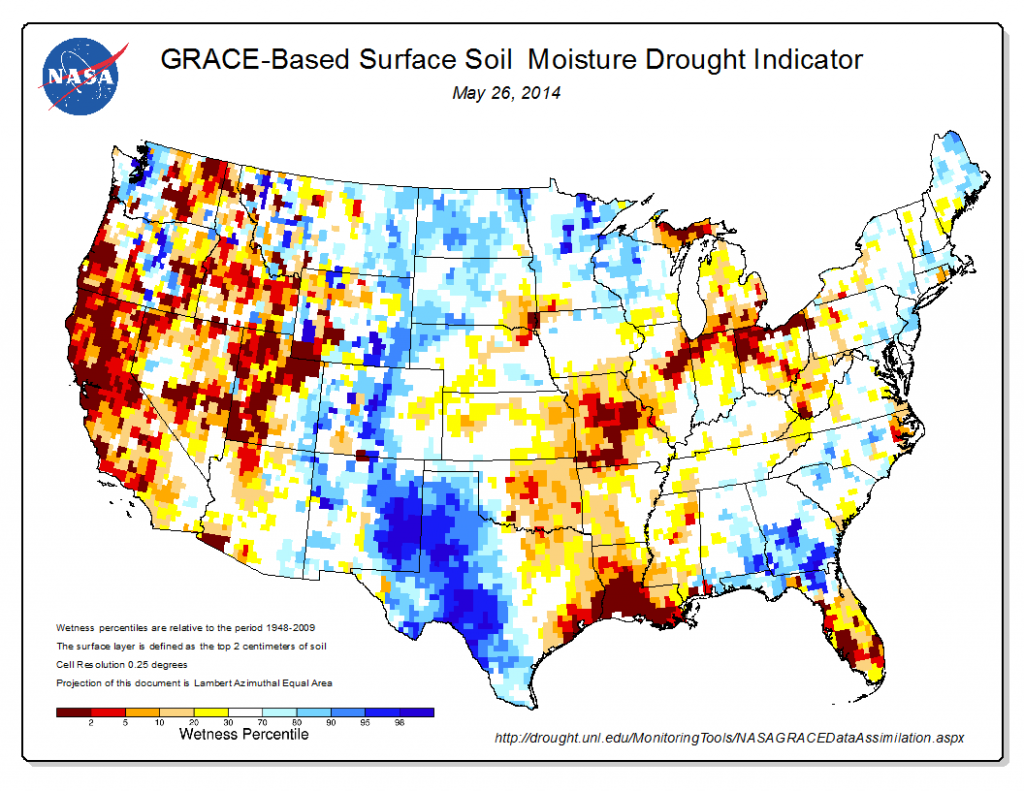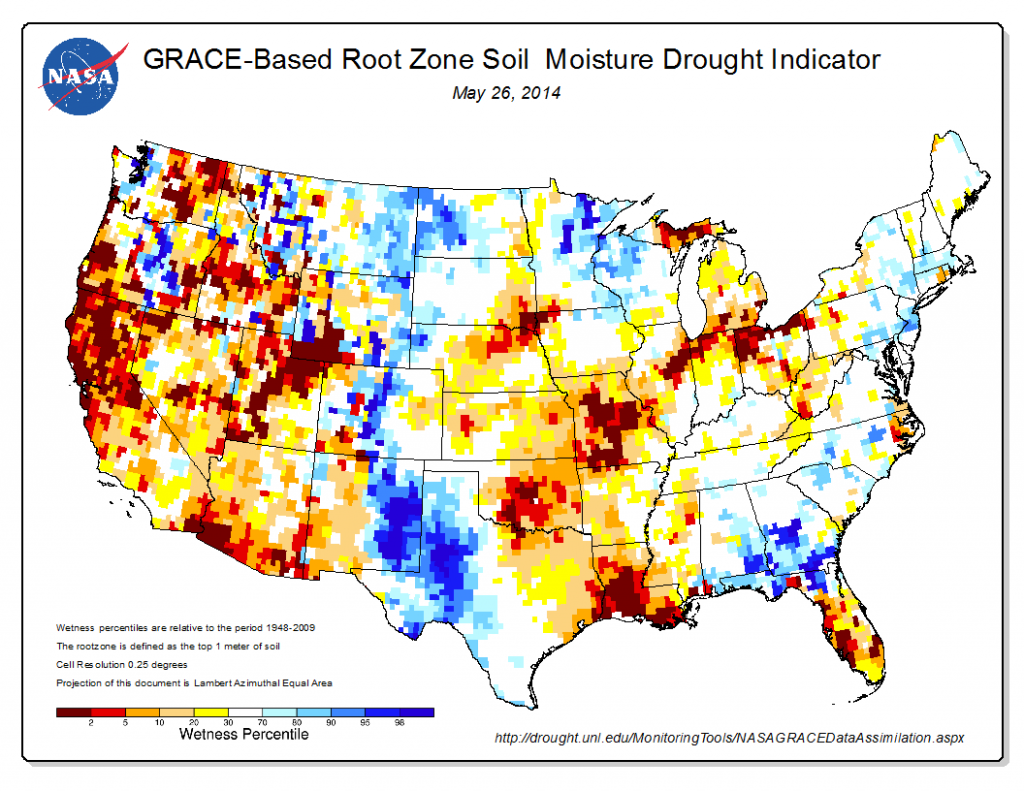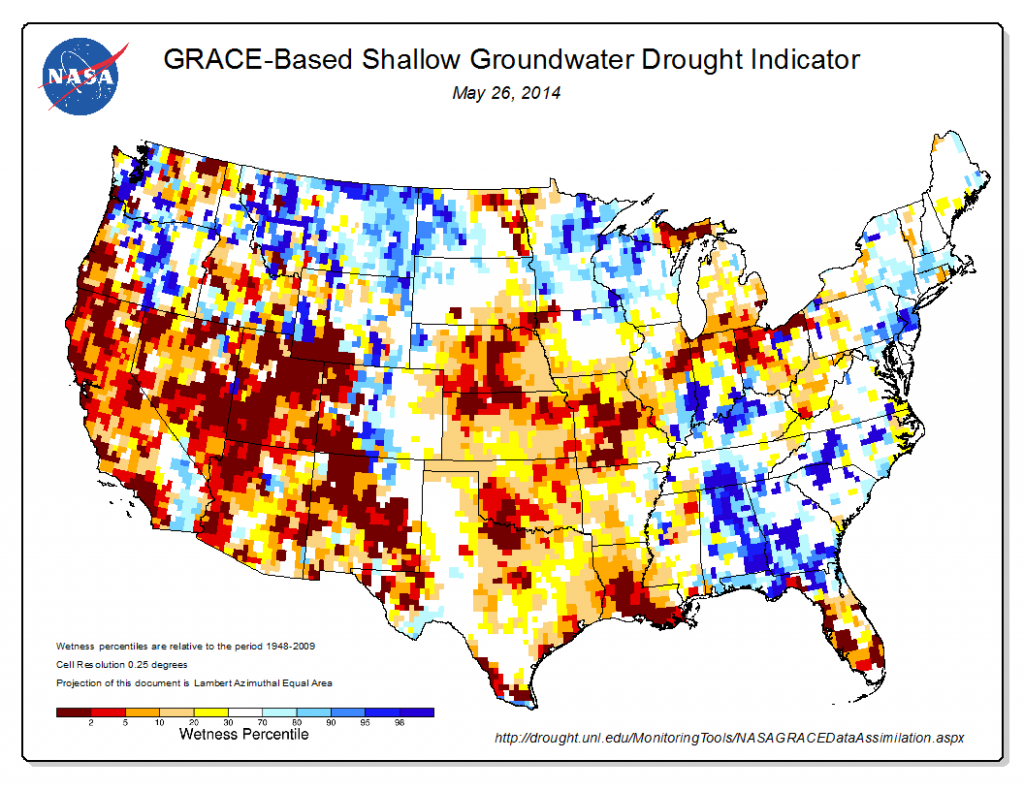
satellite-derived soil moisture estimates, based on NASA GRACE data, courtesy National Drought Mitigation Center
Poking in the garden this morning, I’d never have guessed without actual rain gauge data that we just finished a wet month. It’s really dry out there. But drought is a funny thing, eh? 0.55 inches (1.4 cm) of rain at our house in May was the first above-average month since November. My total now stands at 2.91 inches (7.4 cm) for the water, year (the period beginning last Oct. 1). That is 59 percent of the mean for my house (per PRISM data). The soil’s just always dry at this time of year in New Mexico, I guess.
I live right in that area of white pixels in the north-central part of the state in the map above, which is an experimental attempt at using satellite data from NASA’s GRACE to estimate moisture at various depths – and at various levels of importance to measuring drought. Here’s the root zone map, a variable of interest to the plants in my garden:

satellite-derived root zone moisture estimates, based on NASA GRACE data, courtesy National Drought Mitigation Center
But here’s why drought’s a very difficult thing to write about in the newspaper. It’s one word – “drought” – but a range of phenomena, depending on how you use water. Let’s say you depend, not on soil moisture in the root zone, but on groundwater:

satellite-derived root zone moisture estimates, based on NASA GRACE data, courtesy National Drought Mitigation Center
Yowza.

Pingback: Another Week in the Ecological Crisis, June 8, 2014 – A Few Things Ill Considered
Pingback: Another Week in the Ecological Crisis, June 8, 2014 [A Few Things Ill Considered] | Gaia Gazette